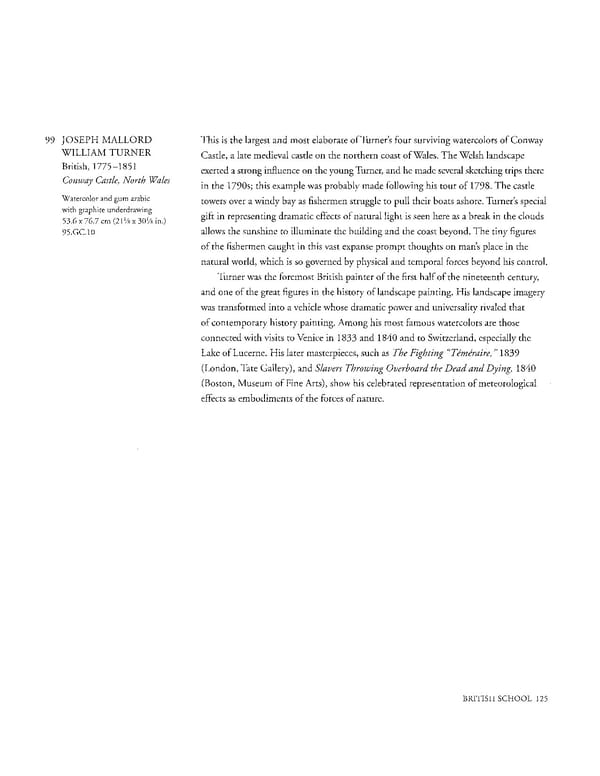99 JOSEPH MALLORD This is the largest and most elaborate of Turner's four surviving watercolors of Conway WILLIAM TURNER Castle, a late medieval castle on the northern coast of Wales. The Welsh landscape British, 17751851 exerted a strong influence on the young Turner, and he made several sketching trips there Conway Castle, North Wales in the 1790s; this example was probably made following his tour of 1798. The castle Watercolor and gum arabic towers over a windy bay as fishermen struggle to pull their boats ashore. Turner's special with graphite underdrawing gift in representing dramatic effects of natural light is seen here as a break in the clouds 53.6 x 76.7 cm (21 x 30 in.) 95.GC.10 allows the sunshine to illuminate the building and the coast beyond. The tiny figures of the fishermen caught in this vast expanse prompt thoughts on man's place in the natural world, which is so governed by physical and temporal forces beyond his control. Turner was the foremost British painter of the first half of the nineteenth century, and one of the great figures in the history of landscape painting. His landscape imagery was transformed into a vehicle whose dramatic power and universality rivaled that of contemporary history painting. Among his most famous watercolors are those connected with visits to Venice in 1833 and 1840 and to Switzerland, especially the Lake of Lucerne. His later masterpieces, such as The Fighting "Temeraire, " 1839 (London, Tate Gallery), and Slavers Throwing Overboard the Dead and Dying, 1840 (Boston, Museum of Fine Arts), show his celebrated representation of meteorological effects as embodiments of the forces of nature. BRITISH SCHOOL 125
 Masterpieces of the Getty Museum: Drawings Page 125 Page 127
Masterpieces of the Getty Museum: Drawings Page 125 Page 127